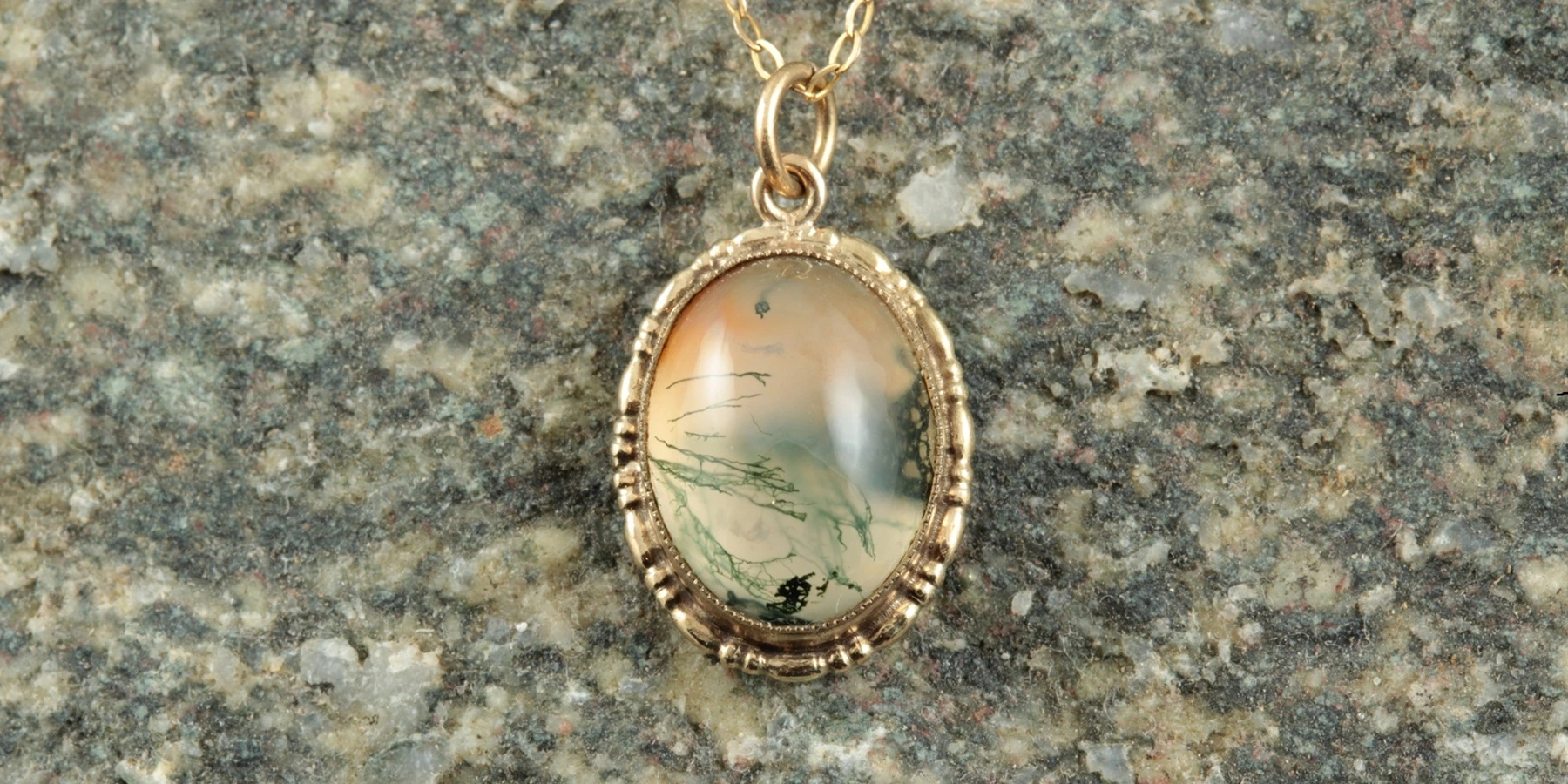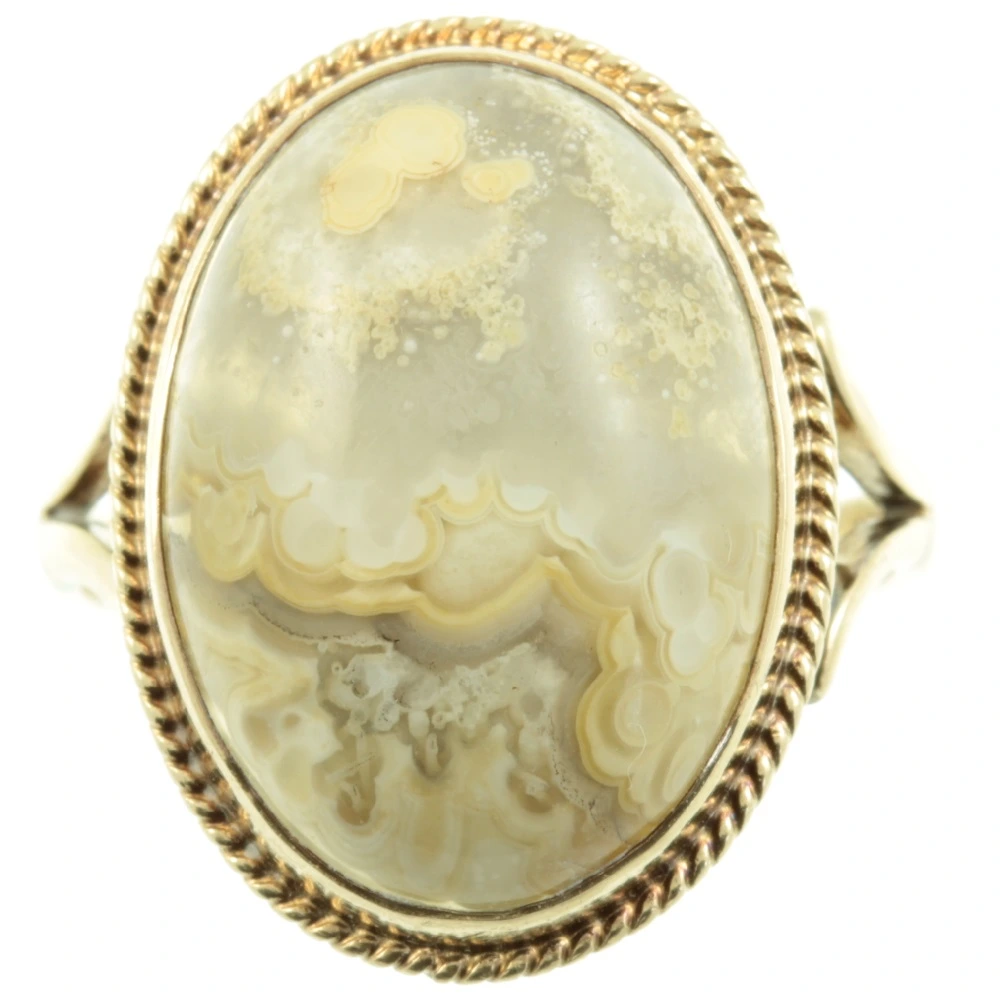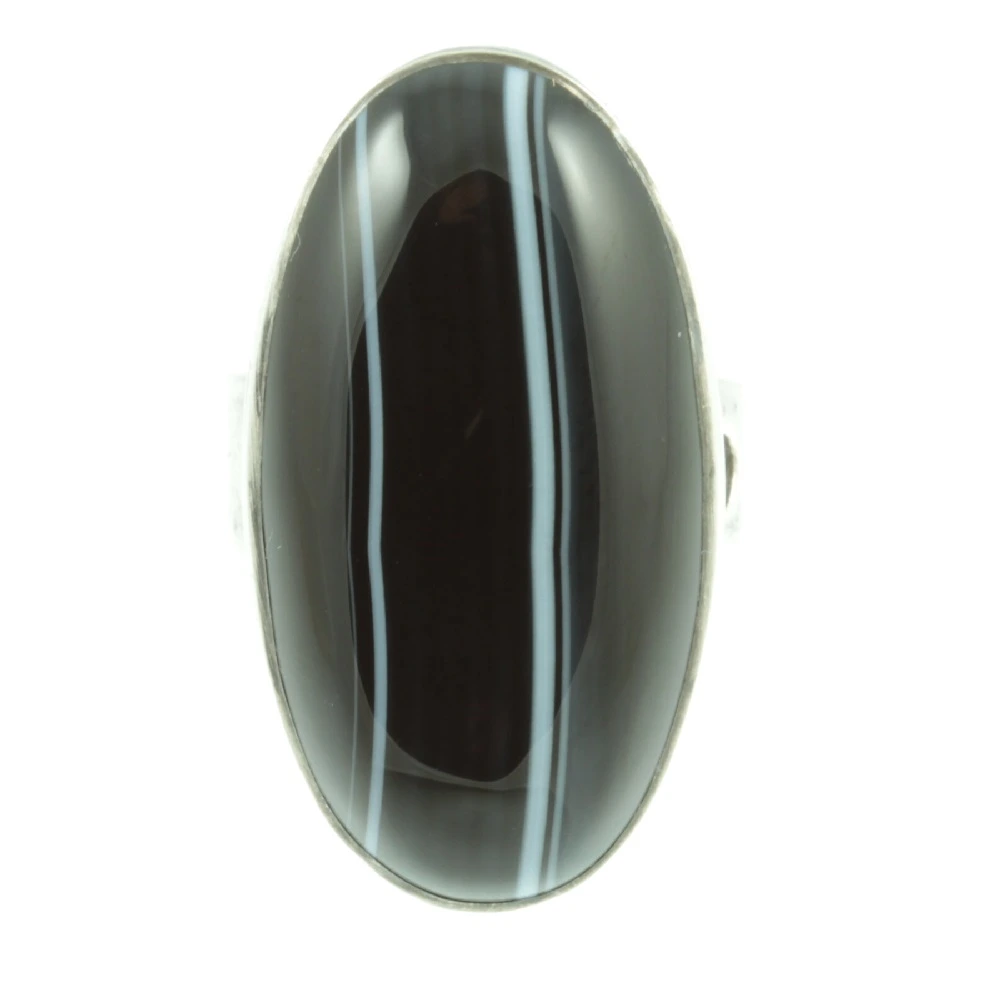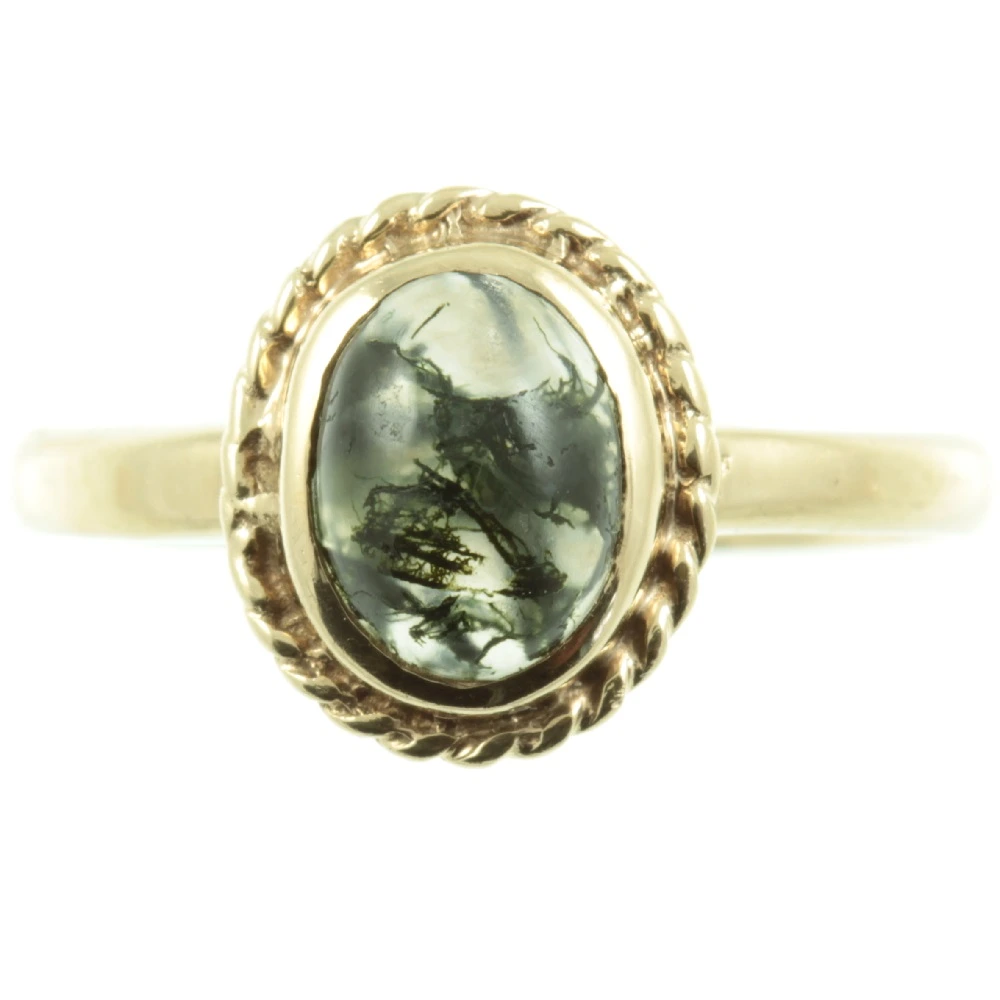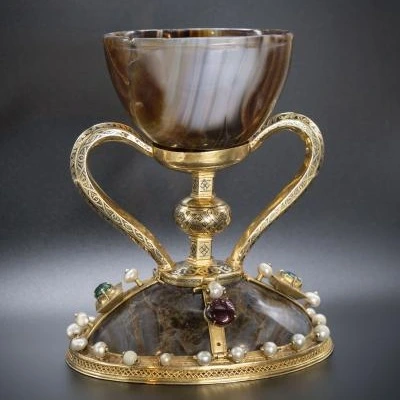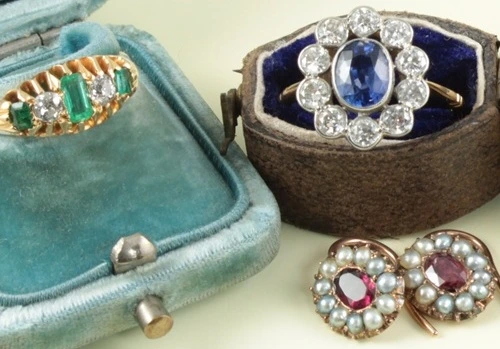Agate

Formation: Agate is formed within hollows in the host rock. These hollows are created in the host rock by gas bubbles during its formation. Resulting in Agate forming in sphere-shaped nodules. The bands in Agate is then formed by rhythmic crystallization of silicon dioxide.
Iron oxide is the main colouring agent in most Agates and as such is considered quite stable in sunlight. However, Agates which have been dyed are most prone to fading when exposed to sunlight for prolonged periods of time. So it is generally recommended to store this gemstone in a soft cotton pouch to protect against scratches as well as sunlight. On the Moh`s scale of hardness, it has a rating of 6.5 – 7. Which makes it suitable for everyday use.
Treatment: Some layers of Agate are porous, which are called “soft”. These layers can absorb dye, while the “hard” white layers consisting of dense Quartz will not absorb the dye. This unique feature allows this gemstone to be dyed almost any colour without affecting the unique concentric bands. The process involves the gemstone being placed in a solution of iron nitrate and heating it to a high temperature. Nickel nitrate, cobalt nitrate and hydrochloric acid along with other compounds are used to create various different colours. The exact dying process is a closely guarded commercial secret. Since 2007, it is a requirement for all Agate to be marked as “treated” or “Dyed” if the stone has undergone any form of treatment.
Dendritic Agate: The name Dendritic comes from the Greek word “dendrites” meaning “tree-like”. Dendritic Agate is also called Mocha Stone because Indian gemstones used to come via the Arabian harbour of Mocha. Dendritic is either a colourless or whitish translucent chalcedony with tree-like or fern-like inclusions. These inclusions are created by iron or manganese during the crystallisation of the gemstone.
On occasion, these inclusions of tree-like shapes can arrange to appear like a landscape. This formation is known as Scenic Agate.
Moss Agate: Also called the “Gardeners Stone” is formed in colourless, translucent chalcedony which contains inclusions of green hornblende. The finest specimens of Moss Agate come from India.
Meaning and Healing Properties
Agate has long been associated with healing properties. The gemstone is said to provide grounding and bring stability to the wearer. It brings an inner sense of calm, dissipates anger and encourages good communication. The layering of the bands within the gemstone, represents growth and renewal in life. The gemstone is said to strengthen the immune system and aid digestion.
Chakras: Blue lace Agate is associated with the throat chakra, Moss Agate is associated with the heart chakra.
Birthstone: Agate is the traditional birthstone for May, symbolising harmony and balance. The other birthstone for May is Emerald.
Zodiac Astrology: Agate gemstone is associated with the star sign Gemini.
History

One of the most important discoveries of Agate was found by the Romans along the banks of the River Nahe in Germany during the Gallic Wars ( 58 to 50BC ). The Romans mined and cut Agate around the area of Idar-Oberstein/Rhineland-Platinate. Large nodules were found in this area, some measuring as much as 9 inch in diameter. The industry prospered in Idar-Oberstein for centuries, due to the abundant availability of Agate, local sandstone which was ideal for cutting and polishing and the availability of suitable streams to power waterwheels in mills. During this time a vast amount of beads, brooches, pendants and rings were produced. Along with objets d`art such as decorative eggs, paper weights, knife handles, seals and much more. Around the early 19th century, the local deposits were nearly exhausted which threatened the industry in Idar-Oberstein. However, around this time there was large deposits of Agate discovered in Brazil. By 1834 the gem cutters in Idar-Oberstein were importing this new supply from Brazil. Giving the industry there a new lease of life. Gemstone cutting and polishing continues in Idar-Oberstein to the present day.
During the Victorian Period Scotland became famous for its Agate jewellery, also called pebble jewellery. Scottish Agate was typically collected along the East Coast particularly around Fife rather than commercially mined. Scottish Agate jewellery is highly prized for its unique patterns and colours.
Today Agate is mined commercially wordwide, with the major producing countries being: Brazil, Uruguay, Mexico, United States, Madagascar and India.
Folklore
Throughout history, Agate gemstones have been associated with protection, strength and harmony. Moss Agate was known as the “Gardener`s Stone” and it symbolised growth, abundance and prosperity. The ancient Egyptians believed that the gemstone could protect them from thunderstorms and calamities. They also believed that the stone gave the gift of speech. The Persians believed that by burning Agate, they would be protected from storms. Other beliefs about Agate claim that it makes the wearer more agreeable, persuasive and to be in God`s favour. Agate was believed to cure insomnia and to give the wearer pleasant dreams.
Greek Mythology: The ancient Greeks associated the stone with the goddess Gaia, who was the goddess of the Earth and mother of all life. The Greeks believed the stone gave the power of protection and courage. As such, Greek soldiers would wear it into battle believing it would shield them from harm. Mithridates VI, king of Pontus had such strong belief in the protective power of the stone that he accumulated some 4,000 Agate vessels. In the didactic Christian text: Physiologus it was written, that if an Agate stone was tied to a rope and dropped into the sea. It would turn and so indicate the location of pearls ( a form of divining ).
Roman Mythology: The Romans believed the stone could be ground into a powder and used as a treatment for venomous snake bites. They associated the gemstone with Aurora, goddess of the Dawn and Bona Dea, goddess of fertility, healing and protection for women exclusively. The Romans also wore the gemstone as an amulet when undertaking voyages, believing the stone could protect them from storms and lightning strikes. They believed the stone could ward off misfortune.
Medieval Europeans: During the middle ages, people believed that this gemstone had a number of medicinal powers. It was believed to have the power to counteract all poisons and to counteract contagious diseases. In the case of fevers, if the sufferer held the gemstone in their hand or placed the stone in their mouth then the fever would abate. Red Agate was believed to increase and/or improve vision, for the wearer. In the Catholic Church, the gemstone was most commonly used to make Rosary beads. These Agate Rosary beads or Rosary bracelets where associated with Saints known for protection against evil or for healing. Agate Rosary beads are associated with Saint Teresa of Avilla, who was known for healing. Agate Rosary bracelets are associated with Saint Benedict, known for protecting against evil and blue Agate Rosary bracelets are for Saint Michael the Archangel who was known for fighting evil. One of the sacred relics of the Catholic Church is the holy Chalice of Valencia, which is believed by many to be the Holy Grail. The Holy Grail is a cup or chalice used by Our Lord Jesus Christ at the last supper to share his blood. The Chalice of Valencia is a red Agate cup and has been housed in the Capilla Del Santo Caliz ( Valencia Cathedral ) since 1437.
Famous Agates
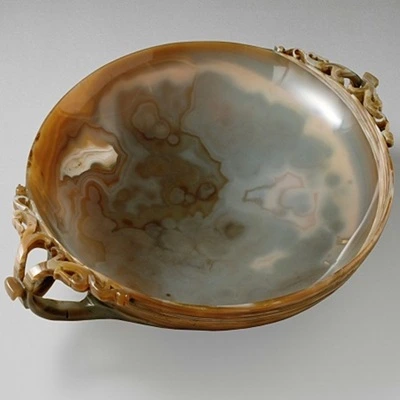
Agate Bowl
Hofburg Palace, Vienna
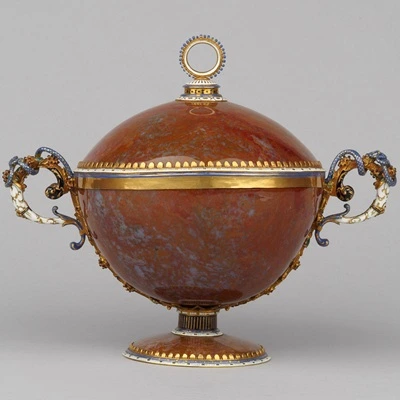
Lidded Agate Cup
Kunsthistorisches Museum, Vienna
Agate Gemological Data
Colour: All colours, banded formation.
Colour of Streak: White.
Moh`s hardness: 6.5 – 7
Density: 2.60 – 2.64
Cleavage: None.
Fracture: Uneven.
Crystal system: Trigonal.
Transparency: Transparent to opaque.
Chemical composition: SiO2 silicon dioxide.
Refractive index: 1.530 – 1.540
Double refraction: 0 to 0.004
Pleochroism: Absent.
Dispersion: None.
Fluorescence: Varies, partly strong: yellow, blue-white.
For Researchers and Journalists
Recommended Citation (MLA) Format:
Hoyne, John. “Agate Gemstone: Formation, History and Folklore.” Carus Jewellery, n.d., https://carusjewellery.com/agate/.
You can also get in touch with Carusjewellery.com on Facebook , were you may leave any comments or questions you may have about this article.

